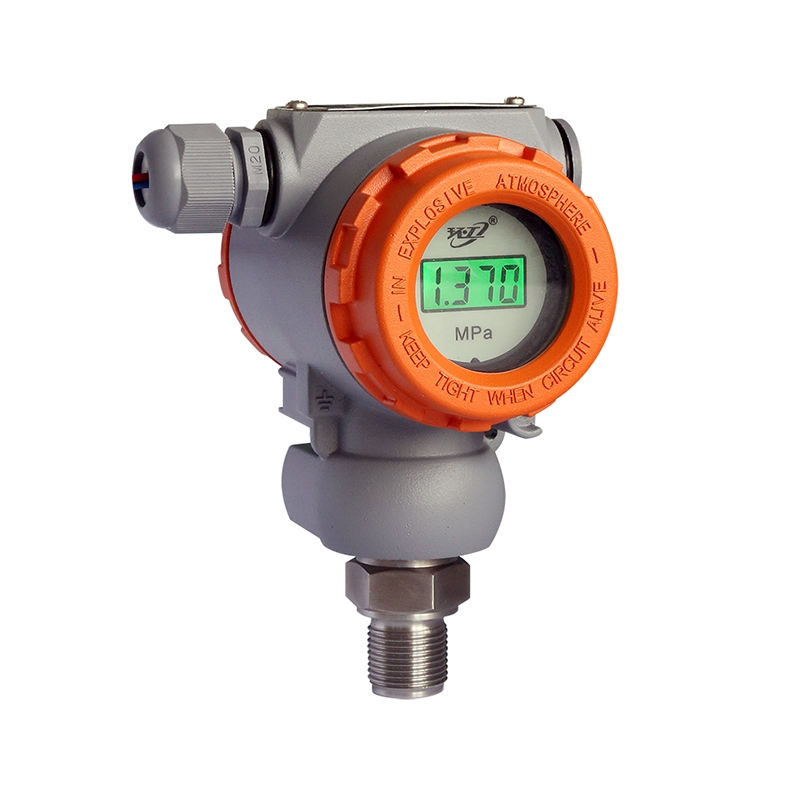Pressure sensors can be designed and manufactured to withstand harsh environments and extreme conditions. However, not all pressure sensors are suitable for such applications, so it's important to choose the right sensor for the specific conditions you are dealing with. Here are some factors to consider when using pressure sensors in harsh environments:
1.Temperature: Extreme temperatures, whether extremely high or low, can affect the performance of pressure sensors. It's crucial to select sensors that are rated for the temperature range of the environment in which they will be used.
High-temperature environments, such as gas turbine engines, may require pressure sensors capable of withstanding temperatures exceeding 500°C. These sensors often utilize specialized materials and coatings to ensure accuracy and reliability under extreme heat.
2.Pressure range: Different pressure sensors have different pressure ranges they can handle. Ensure that the sensor you choose can accurately measure the pressures expected in the harsh environment.
Deep-sea exploration relies on pressure sensors that can withstand immense pressure at great depths. For instance, in underwater vehicles or oil drilling equipment, pressure sensors are used to measure pressures exceeding thousands of psi (pounds per square inch).
3.Corrosive or aggressive media: Some applications involve exposure to corrosive or aggressive substances, such as chemicals or gases. In such cases, you need to select a pressure sensor that is compatible with the media and won't be damaged or affected by it.
Chemical processing plants may use pressure sensors to monitor and control pressure within corrosive or aggressive chemical environments. Sensors made from corrosion-resistant materials, such as stainless steel or titanium, are commonly employed in such applications.
4.Mechanical stress and vibration: Harsh environments often involve mechanical stress and vibration. Pressure sensors designed for such conditions should have robust construction and shock resistance to withstand these forces without compromising their accuracy.
Aerospace and automotive industries require pressure sensors capable of withstanding high levels of mechanical stress and vibration. These sensors are designed with robust casings and shock-resistant features to maintain accuracy in demanding environments.
5.Sealing and ingress protection: To protect the pressure sensor from dust, moisture, or immersion in liquids, it's important to choose sensors with appropriate sealing and ingress protection ratings, such as IP67 or IP68.
Pressure sensors used in hygienic applications, such as food and beverage or pharmaceutical industries, must comply with stringent sealing and ingress protection standards. These sensors are often rated with IP ratings (e.g., IP67 or IP68) to ensure resistance against dust and water ingress.
6.EMI/RFI interference: In certain environments with electromagnetic interference (EMI) or radio frequency interference (RFI), it's important to select pressure sensors that are resistant to such interferences to ensure accurate and reliable measurements.
Industries like telecommunications or power generation may require pressure sensors that are immune to electromagnetic or radio frequency interference. Shielded pressure sensors with proper grounding and filtering mechanisms are utilized to prevent measurement inaccuracies caused by EMI/RFI.
7.Certification and compliance: Depending on the industry and application, there might be specific certifications or compliance requirements for pressure sensors. Ensure that the chosen sensor meets the necessary standards for the intended use.
PB8101CNM pressure transmitters
A pressure transmitter is a device used to measure and transmit the pressure of a fluid or gas in a system. It is a critical component in various industries, including process control, manufacturing, oil and gas, chemical, and many others.
The main purpose of a pressure transmitter is to convert the physical pressure exerted by a fluid or gas into an electrical signal that can be easily measured, displayed, and transmitted to control systems or monitoring devices. It provides accurate and reliable pressure readings, allowing operators and automated systems to monitor and control pressure levels within a system.


































































 English
English русский
русский














